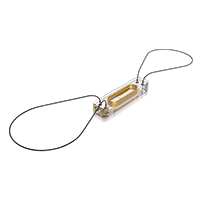Pulmonary Artery Pressure Monitor
The CardioMEMS™ HF System provides the actionable data you need to empower intelligent remote monitoring. The system allows you and your office to measure your patient's pulmonary artery pressure and heart rate, allowing you to better understand your patients heart failure progression and treatment needs.
CardioMEMS HF System
The CardioMEMS HF System is the fastest-growing FDA-approved and CE Marked wireless heart failure monitoring system proven to reduce hospitalization and improve quality of life in New York Heart Association (NYHA) Class III patients and who have been hospitalized for heart failure in the previous year.1
References
- Lindenfeld J, Zile MR, Desai AS, et al. Hemodynamic-guided management of heart failure (GUIDE-HF): a randomized controlled trial. The Lancet. 2021;398:991-1001.
Indications, Safety & Warnings
Rx Only
Brief Summary: Prior to using these devices, please review the Instructions for Use for a complete listing of indications, contraindications, warnings, precautions, potential adverse events and directions for use.
CardioMEMS HF System Indications and Usage: The CardioMEMS HF System is indicated for wirelessly measuring and monitoring pulmonary artery pressure and heart rate in NYHA Class II or III heart failure patients who either have been hospitalized for heart failure in the previous year and/or have elevated natriuretic peptides. The hemodynamic data are used by physicians for heart failure management with the goal of controlling pulmonary artery pressures and reducing heart failure hospitalizations.
CardioMEMS HF System Contraindications: The CardioMEMS HF System is contraindicated for patients with an inability to take dual antiplatelet or anticoagulants for one month post implant.
CardioMEMS HF System Potential Adverse Events: Potential adverse events associated with the implantation procedure include, but are not limited to, the following: air embolism, allergic reaction, infection, delayed wound healing, arrhythmias, bleeding, hemoptysis, hematoma, nausea, cerebrovascular accident, thrombus, cardiovascular injury, myocardial infarction, death, embolization, thermal burn, cardiac perforation, pneumothorax, thoracic duct injury and hemothorax.
MAT-2006757 v3.0

